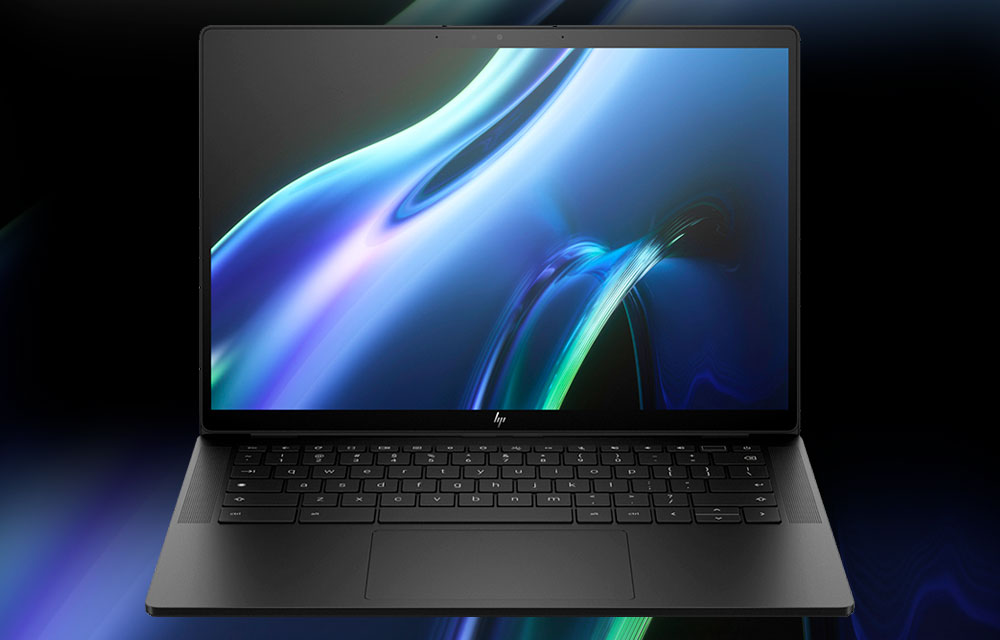
Nvidia’s GTC convention is over, however if you wish to see what’s coming with AI, together with generative AI like ChatGPT, robotics, autonomous electrical vehicles, and the metaverse, watching the keynote by CEO Jensen Huang is value it.
An excessive amount of Nvidia’s success comes from its work on the metaverse, which comes at a time when Fb, which modified its identify to Meta, has largely didn’t deliver a profitable metaverse product to market.
Let’s discover why Nvidia’s metaverse effort has been wildly profitable whereas Fb’s grew to become probably the most costly failures in tech historical past. We’ll shut with my Product of the Week, a Chromebook from HP that could be the most effective Chromebook ever constructed.
Nvidia’s Metaverse Success
Nvidia has been engaged on parts of the metaverse for about 28 years. It has centered on the industrial market nearly completely as a result of the enterprise sector would acquire vital monetary advantages from the metaverse. Not solely is the industrial market extra keen to pay for an costly instrument, however the ensuing potential financial savings would additionally considerably mitigate the initially excessive value of any new know-how.
In any case, PCs had been company instruments at quantity, to start with. As a consequence of their excessive price initially, the buyer marketplace for PCs didn’t emerge till a lot later. Microsoft did one thing comparable with Lawrence Livermore Nationwide Laboratory and the HoloLens, permitting it to outperform friends like Google Glass considerably in the beginning.
Nvidia — whose metaverse instrument is known as Omniverse — additionally realized early on that it couldn’t create its metaverse instrument alone, so it partnered with many corporations to develop each specialised workstations and servers and the mandatory vital providers wanted to deploy the outcome.
setWaLocationCookie(‘wa-usr-cc’,’sg’);
Each time Nvidia talks about its Omniverse success, the dialog contains huge numbers of companions who had been, are, and can be wanted to make sure a constructive final result for an providing that has to combine extremely with the true world.
Primarily by means of its GTC occasions, Nvidia drove curiosity and coaching into the phase. Over time, it has created a complete set of instruments that assist builders create their very own metaverse cases and populate them with content material. About that content material, Nvidia has pushed a common design language in order that digital objects might be made at excessive speeds to finish Nvidia’s metaverse imaginative and prescient.
Fb’s Metaverse Failure
Fb didn’t actually begin to ramp into the metaverse till 2019, almost 25 years after Nvidia started its effort. Fb appeared to focus extra on customers than companies with its strategy. Customers are very cost- and content-oriented. You possibly can deploy a company instrument with few makes use of, however customers need worth and breadth, and, not like companies, they’ll’t offset the price of a product with price financial savings, a minimum of not on this space.
To succeed, Fb would must be extra complete by way of content material, cheaper by way of value and associated providers, and higher than Nvidia as a result of instruments utilized by customers have the next requirement for ease of use than professionals who’re approaching know-how as a part of their job.
Fb largely tried to go it alone and incurred exorbitant prices related to quickly making a metaverse, which appeared to tank Fb’s valuation and ultimately led to huge layoffs.
The corporate demonstrated that the price of constructing a brand new market is simply too nice for any firm to go alone, even one which was as soon as as worthwhile as Fb. You want companions, builders, and others to assist carry the event price as a result of nobody firm has the assets or funding mandatory to construct an ecosystem, and the metaverse requires a deep ecosystem.
setWaLocationCookie(‘wa-usr-cc’,’sg’);
Since Fb is funded primarily by means of promoting, it must be, nevertheless it isn’t a advertising professional. It doesn’t appear capable of construct demand for its merchandise, which should be a giant pink flag for different advertisers as a result of it implies Fb isn’t good for advertising. It’s like a toolmaker who has by no means used the instruments they make.
Not solely did this lack of functionality cripple efforts like Fb’s metaverse, nevertheless it additionally harm associated efforts just like the VR Headsets. Having what quantities to a advertising superpower however not understanding how and even when to make use of it might be uniquely silly for Fb if it weren’t for the truth that Google has the very same drawback.
Whereas corporations that don’t use their very own know-how are something however new, they’re typically unsuccessful, however even when executing poorly, these corporations revenue like loopy.
Wrapping Up
So, Nvidia was profitable, and Fb/Meta wasn’t. Nvidia labored on the hassle for many years, constructed up a sturdy and deep companion system protecting all points of the product, co-developed with prospects that will use it, and used it themselves closely throughout the growth course of. Thus, when Omniverse got here out, it was a winner as a result of the corporate rigorously developed a basis for that success.
Fb’s failure resulted from the corporate making an attempt to maneuver too shortly and alone. It by no means even appeared to attempt to get to a product providing that will be acceptable to its client viewers, the prices related to the event overwhelmed the corporate’s assets, and it appeared to lose observe of its vacation spot.
Launching a market isn’t fast or simple. It might appear that approach in the long run, nevertheless it usually takes a long time of labor to make sure eventual success. Nvidia put within the time, effort, and ecosystem-building technique, leading to its metaverse success. Fb missed that assembly, and regardless that it appeared to know higher than most what wanted to get executed for a extra consumer-oriented metaverse, it didn’t execute.
Contrasting the 2 corporations showcases the significance of long-term strategic planning, companions, and a transparent thought of the place you need to find yourself. It additionally exhibits that for applied sciences just like the metaverse, the industrial market is a much better place to begin than the buyer market.

HP Dragonfly Professional Chromebook
Final week I spoke of the HP Dragonfly Professional Home windows Pocket book, however immediately, I need to chat about its peer, the HP Dragonfly Professional Chromebook.
This Chromebook is arguably the successor to the outdated Google Pixelbook that didn’t promote that properly however centered on offering a premium Chromebook for individuals who wished extra of an Apple-like expertise however with ChromeOS, not macOS.
Created in shut collaboration between Google and Intel, this Chromebook is a singular providing. It’s an Intel Evo machine which ought to imply fewer issues and better reliability as a result of additional high quality management steps Evo guarantees.

The HP Dragonfly Professional Chromebook in Glowing Black sports activities a 14″ contact show, 16 GB reminiscence, and a 256 GB SSD. (Picture Credit score: HP)
On the surface, the Glowing Black coloration Chromebook appears to be like almost an identical to the Dragonfly Professional Home windows product I lined final week. It has an analogous end, is constructed with a heavy concentrate on sustainability, plus:
- Lengthy battery life;
- Respectable efficiency — although the Home windows AMD-based providing seems to have extra energy;
- A high-quality, backlit keyboard;
- Fingerprint recognition;
- 1,200-nit outside viewable show; and
- The identical new high-performance charger that confirmed up within the Home windows laptop computer. (Bear in mind that these chargers work poorly on airplanes, and you might have considered trying a three-prong extension wire to be used on a airplane.)
HP’s Dragonfly Professional Chromebook has extra battery life and a far brighter show than its Home windows peer however lacks facial recognition, which is frequent in most mid- to high-end Home windows laptops.
This machine is for individuals who actually just like the ChromeOS expertise however are uninterested in a budget {hardware} that tends to encompass that platform. Because of this, the HP Dragonfly Professional Chromebook, with an inventory value of $999.99, is my Product of the Week.
